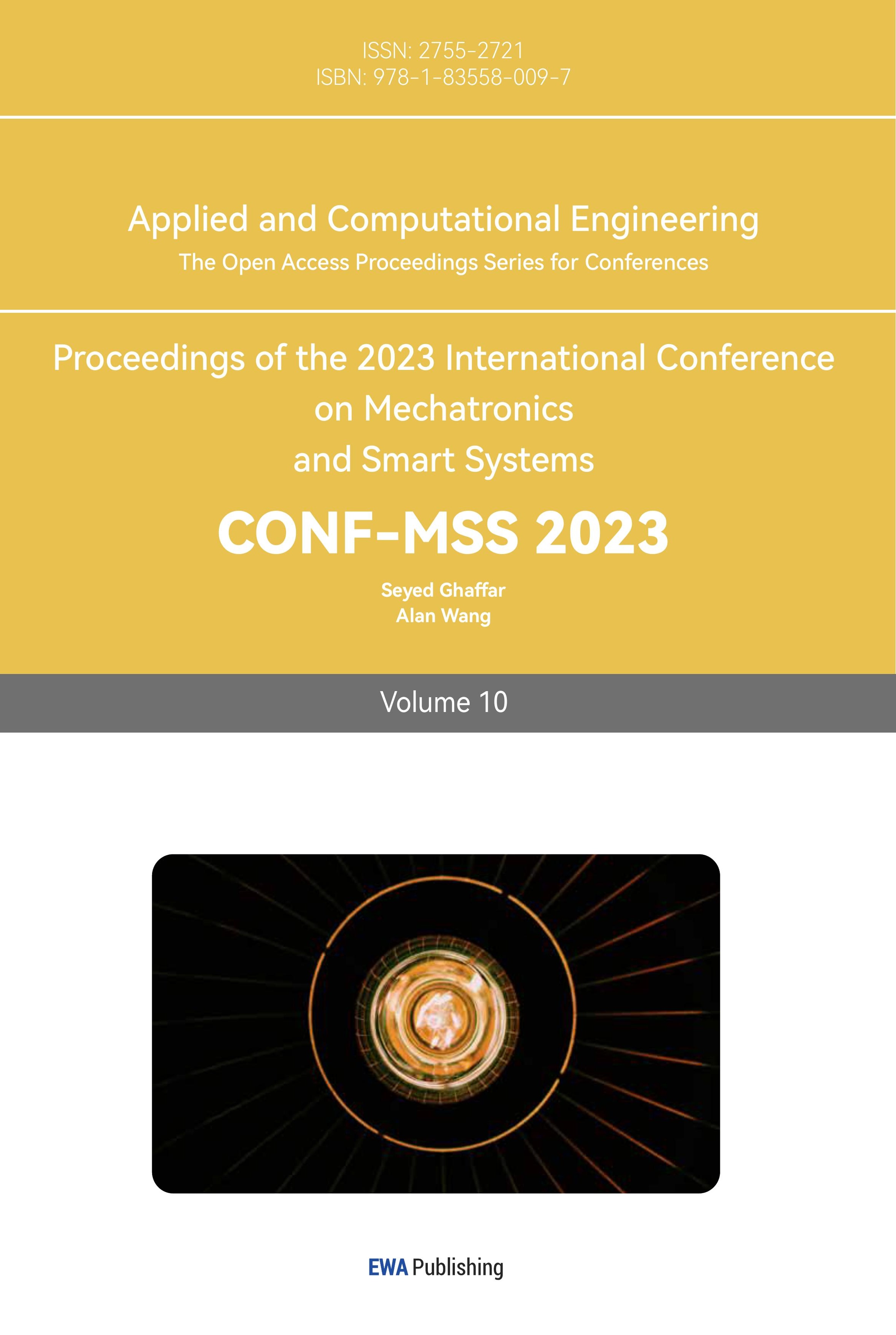References
[1]. Wang Xinmin,Wang Xiaoyan, Xiao Kun 2015 Formation Flight Technology of UAV Xi an: Northwestern Polytechnic University Press 70-83
[2]. Chen Haiyun, Chen Huayun, Liu Qiang 2020 Multi-UAV 3D formation path planning based on improved artificial potential field method Journal of System Simulation, 2020(3):7
[3]. Rostami S M H, Sangaiah A K, Wang J, et al. 2019 Obstacle avoidance of mobile robots using modified artificial potential field algorithm EURASIP Journal on Wireless Communications and Networking 2019(1): 1-19
[4]. Gao Xi na, Wu Lijuan, Li Weiwei, et al. 2014 Formation control of multi robots with artificial potential field method Journal of University of Science and Technology Liaoning 37(4): 381-386
[5]. Zhu Yi, Zhang Tao, Song Jingyan. 2010 Study on the Local Minima Problem of Path Planning Using Potential Field Method in Unknown Environments Acta Automatica Sinica 36(8): 1122-1130
[6]. Luo Qianyou, Zhang Hua, Wang Da, et al. 2011 Application of improved artificial potential field approach in local path planning for mobile robot Computer Engineering and Design 32(4): 1411-1413
[7]. Yang X, Yang W, Zhang H et al. 2016 A new method for robot path planning based artificial potential field 2016 IEEE 11th Conference on Industrial Electronics and Applications (ICIEA). IEEE 2016: 1294-1299
[8]. Sun F, Han S 2016 A flight path planning method based on improved artificial potential field International Conference on Computer, Information and Telecommunication Systems. IEEE 2016: 1-5
[9]. Sun Jingliang, Liu Chunsheng, Shi Haoming 2015 Optimal consensus algorithm for obstacle avoidance based on dynamic potential field Flight Dynamics 33(4): 376-380
[10]. Guo Xiaopeng 2017 Research on Improved Artificial Potential Field Path Planning AlgorithmHarbin: Harbin Institute of Technology 2017: 26-42
Cite this article
Jiang,H. (2023). Improved artificial potential field to solve the problem of local minimum. Applied and Computational Engineering,10,159-166.
Data availability
The datasets used and/or analyzed during the current study will be available from the authors upon reasonable request.
Disclaimer/Publisher's Note
The statements, opinions and data contained in all publications are solely those of the individual author(s) and contributor(s) and not of EWA Publishing and/or the editor(s). EWA Publishing and/or the editor(s) disclaim responsibility for any injury to people or property resulting from any ideas, methods, instructions or products referred to in the content.
About volume
Volume title: Proceedings of the 2023 International Conference on Mechatronics and Smart Systems
© 2024 by the author(s). Licensee EWA Publishing, Oxford, UK. This article is an open access article distributed under the terms and
conditions of the Creative Commons Attribution (CC BY) license. Authors who
publish this series agree to the following terms:
1. Authors retain copyright and grant the series right of first publication with the work simultaneously licensed under a Creative Commons
Attribution License that allows others to share the work with an acknowledgment of the work's authorship and initial publication in this
series.
2. Authors are able to enter into separate, additional contractual arrangements for the non-exclusive distribution of the series's published
version of the work (e.g., post it to an institutional repository or publish it in a book), with an acknowledgment of its initial
publication in this series.
3. Authors are permitted and encouraged to post their work online (e.g., in institutional repositories or on their website) prior to and
during the submission process, as it can lead to productive exchanges, as well as earlier and greater citation of published work (See
Open access policy for details).
References
[1]. Wang Xinmin,Wang Xiaoyan, Xiao Kun 2015 Formation Flight Technology of UAV Xi an: Northwestern Polytechnic University Press 70-83
[2]. Chen Haiyun, Chen Huayun, Liu Qiang 2020 Multi-UAV 3D formation path planning based on improved artificial potential field method Journal of System Simulation, 2020(3):7
[3]. Rostami S M H, Sangaiah A K, Wang J, et al. 2019 Obstacle avoidance of mobile robots using modified artificial potential field algorithm EURASIP Journal on Wireless Communications and Networking 2019(1): 1-19
[4]. Gao Xi na, Wu Lijuan, Li Weiwei, et al. 2014 Formation control of multi robots with artificial potential field method Journal of University of Science and Technology Liaoning 37(4): 381-386
[5]. Zhu Yi, Zhang Tao, Song Jingyan. 2010 Study on the Local Minima Problem of Path Planning Using Potential Field Method in Unknown Environments Acta Automatica Sinica 36(8): 1122-1130
[6]. Luo Qianyou, Zhang Hua, Wang Da, et al. 2011 Application of improved artificial potential field approach in local path planning for mobile robot Computer Engineering and Design 32(4): 1411-1413
[7]. Yang X, Yang W, Zhang H et al. 2016 A new method for robot path planning based artificial potential field 2016 IEEE 11th Conference on Industrial Electronics and Applications (ICIEA). IEEE 2016: 1294-1299
[8]. Sun F, Han S 2016 A flight path planning method based on improved artificial potential field International Conference on Computer, Information and Telecommunication Systems. IEEE 2016: 1-5
[9]. Sun Jingliang, Liu Chunsheng, Shi Haoming 2015 Optimal consensus algorithm for obstacle avoidance based on dynamic potential field Flight Dynamics 33(4): 376-380
[10]. Guo Xiaopeng 2017 Research on Improved Artificial Potential Field Path Planning AlgorithmHarbin: Harbin Institute of Technology 2017: 26-42









